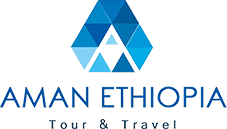Ethiopia is home to around eight Omo Valley Tribes comprised of over 200,000 people speaking 47 different languages. Historically, these ethnic groups have exhibited a fascinating range of cultural practices and four of Africa’s major linguistic groups including the endemic Omotic languages are represented within one relatively small area. The fact that this small area happens to be the place where people of totally different cultural groups meet making the Omo Valley one of the most popular melting pots in Africa. Here are a few tribes of the Omo Valley and their unique cultures:
Daasanach tribe

Alternatively known as the Geleb, Marille, and Rashiat, the Daasanach tribe live just north of Lake Turkana. They are neighboured by Turkana and Bume and are Ethiopia’s southernmost people. At a population of around 24,000, the Daasanach can be divided into eight clans, including Elele, Inkabelo, Inkoria, Koro, Naritech, Oro, Randal, and Ri’ele. Historically, the Oro have had the most dominating language and are solely responsible for the Kushite language now spoken by all Daasanach.
The Daasanach are not a united people, but more like a cluster of small groups with a shared language, land, and rituals. The Inkabelo are the wealthiest and they occupy the best lands. The most important ritual of the Daasanach is called the dime. The only men who can take part in this ritual are men who have daughters that have already reached puberty. The ceremony takes place for six weeks and the participants are upgraded to great men and can engage in politics.
The ritual is directly connected to the upcoming marriage of the daughters and consists of slaughtering large quantities of cattle. At the end of the ceremony, they carry wooden shields and a stick with a phallus symbol. Participants are extremely well-dressed with ostrich feathers in their clay hair, oxtails around their arms, leopard skin over their shoulders, as well as the skirt they wore during their circumcision years ago.
Tsemai
The Tsemai are the dominant people of the Weito village on the Konso-Jinka road. They are estimated to be a total number of 5000 people and their territory extends along the western bank of the Weito River known in Tsemai as the Dulaika River. They are regarded to be one of the least known ethnic groups in Ethiopia and are mixed subsistence farmers who practice flood cultivation, keep beehives, and rare livestock, especially cattle.
The Tsemai people speak an Omotic language that is closely related to the one spoken in Konso which according to oral tradition is from where their founding chief Asasa originated. The present chief who lives at the Tsemai capital of Genda Bogolikila is claimed to be the ninth in line after Asasa.
The Tsemai people share a closer political and spiritual affiliation with the Erbore who speak a similar language and who openly intermarry with the Hammar tribe whose territory lies immediately west of theirs.
Arbore

Arbore is far more rustic and unaffected than many similarly-sized towns south Omo. Although their lands are relatively large, the police station on the outskirts of the town is more or less the only building that isn’t constructed traditionally. The Arbore people migrated to their present homeland from Konso two centuries ago.
They played an important role in trade between the Omo River and the Konso highlands because they have an ancestral and cultural link to Konso and the pastoralists of the surrounding lowlands. The Arbore town lies in an area where several tribal boundaries converge and they are known to intermarry with other ethnic groups like the Gunji and Borena Oromo, the Hammar and the Tsemai.
Bome
Also known as the Nyangatom tribe, the Bome live west of the Daasanach people, southwest of the Karo people and north of the Ethio-Kenyan boundary. The Bome occasionally migrate into the lower regions of the Omo National Park when water or grazing is scarce. With a population of around 6000, the Bome speak Nyangatom which is one of the Omotic languages. They are agro-pastoralists and they rely on cattle-herding and flood-retreat agriculture consisting mainly of sorghum harvesting on the Omo and Kibbish rivers.
The Bome measure their wealth in terms of the size of their herd through flood agriculture now plays a major role in their subsistence. They are known to be great warriors and active warmongers and while they are peaceful and welcoming, they have had conflicts with their neighboring tribes including the Karo, Surma, and Hammar tribes.
Mursi

With a population of about 5000, the Mursi tribe are primarily pastoralists categorized in the Nilo-Saharan language family. The Mursi tribe lip plates are already famous and usually involve an unmarried woman’s lower lip, being pierced and then progressively stretched for about year. A clay disc indented like a pulley is squeezed into the hole in the lip to form the Mursi tribe lip plates. As the Mursi woman’s lip stretches, larger discs are forced in until the lip is so long it can sometimes be pulled right over the owner’s head. The size of the Mursi tribe lip plate determines the bride price.
A visit to the Omo valley opens up another world as visiting such a unique culture helps one to truly differentiate between what is necessary for life and what isn’t. It helps you realize that it takes nothing to be happy. If you would like to visit the Omo valley while in Ethiopia, contact us today

